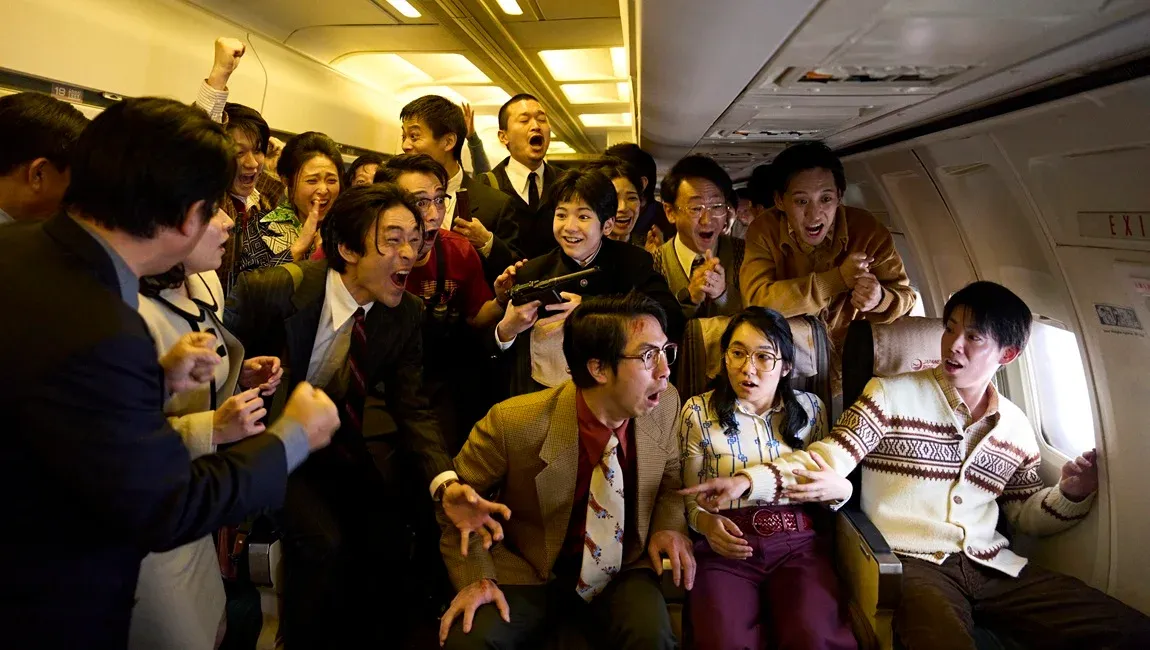Good News
Good News’ black comedy cuts with both edges of its katana.

Good News opens with members of the Japanese militant communist group Red Army Faction — armed with pistols, katanas, and a bomb — hijacking Japan Air Lines Flight 351 and demanding that the domestic flight from Tokyo’s Haneda Airport be rerouted to Pyongyang, North Korea. It’s unusual and usually unwise to open a hijacking film with the actual criminal event central to the genre, but director Byun Sung-hyun, an expert in twisting genres to make them do new things, layers in both black comedy and a political thriller with his hijacking to scolding effect.
The hijacking of Flight 351 in 1970 actually happened. Good News gets the most memorable details correct, despite an opening narration mysteriously warning against the reliability of the events. The flight was hijacked by the young Japanese communists who sought a socialist haven, although the original haven of choice was Cuba before they settled for North Korea. (Likely for both narrative simplicity and nationalistic reasons, Cuba is never mentioned in the South Korean film.) South Korea, knowing the flight to the upper part of the peninsula would involve its airspace, stepped in to help Japan. It helped that their collaboration would please their American neo-colonizers, too. As portrayed in the movie, air traffic controllers gave false directions to the North Korean capital and unexpectedly rerouted the plane to Seoul, where the Gimpo Airport was transformed with the help of a movie director to look like Pyongyang in a naïve attempt to fool the young communists. The hijackers were even obsessed with the Ashita no Joe manga, as depicted by Byun.
Continue reading at In Review Online.